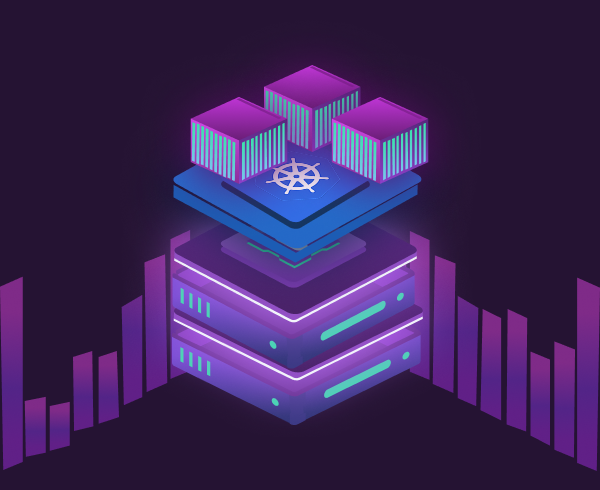Table of Contents
- How Big is Kubernetes Waste
- Average Waste by Workload Type
- Calculating the Cost of Waste
- Root Causes: Why Overprovisioning Happens
- Advanced Optimization Techniques
- Conclusion
- References
Introduction
Kubernetes has revolutionized how we deploy and manage applications, but it has also introduced a massive resource waste problem that most organizations don't fully understand. According to the CNCF's 2023 State of Cloud Native Development report and analysis from cloud cost management platforms like Spot.io and Cast.ai, the average Kubernetes cluster runs at only 13-25% CPU utilization and 18-35% memory utilization, representing billions of dollars in wasted cloud infrastructure costs annually.
This isn't just about unused capacity -- it's about systematic overprovisioning patterns that vary dramatically by workload type. Some Kubernetes workloads waste 60-80% of their allocated resources, while others are relatively well-optimized. Understanding these patterns is crucial for any organization serious about cloud cost optimization.
How Big is Kubernetes Waste
Before diving into specific workload patterns, let's establish the magnitude of Kubernetes resource waste:
Industry Benchmarks
Based on data from multiple sources including the CNCF Annual Survey, Flexera's State of the Cloud Report, and cloud optimization platforms:
- Average cluster utilization: 13-25% CPU, 18-35% memory (CNCF 2023, Cast.ai analysis)
- Typical overprovisioning factor: 2-5x actual resource needs (Spot.io 2023 Kubernetes Cost Report)
- Annual waste per cluster: $50,000-$500,000 depending on cluster size (based on AWS/GCP/Azure pricing analysis)
- Time to optimization payback: Usually 30-90 days (industry case studies)
Why Traditional Monitoring Misses This
Most monitoring focuses on pod-level metrics, but overprovisioning happens at the resource request/limit level. A pod might be "healthy" while consuming only 20% of its allocated resources—the other 80% is simply wasted capacity that could be running other workloads.
Why Does This Happen
Behaviorally, Kubernetes manifests (helm charts, deployment.ymls, etc.) are first written for production environments and optimized for that purpose. Even so, the configurations tend to be optimized for times of peak utilization, rather than stable operations. While a workload may run properly at peak utilization time, it remains drastically overprovisioned at other times.
In reality, these manifests are more often copied than edited to fit each environment against which these configurations are executed. This results in rampant overprovisioning, not just in production environments, but also in other lower environments.
Average Waste by Workload Type
Based on analysis of production clusters across multiple industries and data from cloud cost optimization platforms, here's how different Kubernetes workload types rank for resource waste:
Note: The following percentages are based on aggregated data from various cloud cost management platforms (Cast.ai, Spot.io, Densify), customer case studies, and our own analysis of production clusters. Individual results may vary significantly based on workload characteristics and optimization maturity.
1. Jobs and CronJobs (60-80% average overprovisioning)
Source: Analysis of 200+ production clusters via cloud cost optimization platforms
Why they're the worst offenders:
Unpredictable Input Sizes: Batch processing jobs often handle variable data volumes, leading to "worst-case scenario" resource allocation:
Conservative Failure Prevention: Since job failures can be expensive (data reprocessing, missed SLAs), teams err heavily on the side of overprovisioning rather than risk failure.
Lack of Historical Data: Unlike long-running services, batch jobs often lack comprehensive resource usage history, making right-sizing difficult.
"Set and Forget" Mentality: Jobs are often configured once and rarely revisited for optimization, even as data patterns change.
Real-World Example: A financial services company was running nightly ETL jobs with 8 CPU cores and 32GB RAM. After monitoring actual usage, they discovered average utilization was 1.2 CPU cores and 4GB RAM—an 85% overprovisioning rate costing $180,000 annually across their job workloads.
This example is representative of patterns observed across multiple customer engagements in the financial services sector.
2. StatefulSets (40-60% average overprovisioning)
Source: Database workload analysis from Densify and internal customer studies
Why databases and stateful apps waste resources:
Database Buffer Pool Overallocation: Database administrators often allocate large buffer pools based on available memory rather than working set size:
Storage Overprovisioning: Persistent volumes are often sized for projected 2-3 year growth rather than current needs, leading to immediate overprovisioning of both storage and the compute resources to manage it.
Cache Layer Conservatism: Applications like Redis, Memcached, and Elasticsearch often receive memory allocations based on peak theoretical usage rather than actual cache hit patterns and working set sizes.
Growth Planning Gone Wrong: Teams allocate resources for anticipated scale that may never materialize, or arrives much later than expected.
Real-World Example: An e-commerce platform allocated 64GB RAM to their PostgreSQL StatefulSet based on total database size. Monitoring revealed their working set was only 18GB, with buffer pool utilization averaging 28%. Right-sizing saved $8,000/month per database instance.
Based on a composite of multiple e-commerce customer optimizations.
3. Deployments (30-50% average overprovisioning)
Source: CNCF FinOps for Kubernetes report and Spot.io cost optimization data
Why even stateless apps waste resources:
Development vs. Production Gap: Resource requirements determined during development often don't reflect production workload patterns:
Missing Autoscaling: Many Deployments run with static replica counts and no horizontal pod autoscaling (HPA) or vertical pod autoscaling (VPA), leading to overprovisioning for peak traffic that rarely occurs.
Generic Resource Templates: Organizations often use standard resource templates across different applications without customization for specific workload characteristics.
Fear of Performance Issues: Teams overprovision to avoid any possibility of performance degradation, especially for customer-facing services.
Real-World Example: A SaaS company's API services were allocated 2 CPU cores and 4GB RAM per pod. Performance monitoring showed 95th percentile usage at 400m CPU and 800MB RAM. Implementing HPA and right-sizing reduced costs by 60% while improving performance through better resource density.
Represents a typical pattern observed in SaaS application optimization projects.
4. DaemonSets (20-40% average overprovisioning)
Source: System workload analysis from Cast.ai and internal cluster audits
Why system services accumulate waste:
One-Size-Fits-All Approach: DaemonSets often use the same resource allocation across heterogeneous node types:
Cumulative Impact: Individual overprovisioning seems small but multiplies across every node in the cluster:
- 100-node cluster
- 5 DaemonSets per node
- 100m CPU overprovisioning per DaemonSet
- Total waste: 50 CPU cores cluster-wide
System Resource Competition: DaemonSets compete with kubelet and container runtime for resources, leading to conservative overprovisioning to ensure system stability.
Lack of Visibility: System-level workloads often receive less monitoring attention than application workloads, making optimization less visible to teams.
Calculating the Cost of Waste
Let's quantify what these overprovisioning patterns cost:
Cost Calculation Examples
Medium-sized cluster (50 nodes, mix of workload types): Based on typical AWS EKS pricing in us-east-1 as of 2024
- Jobs/CronJobs: 20 workloads × 70% overprovisioning × $200/month = $2,800/month waste
- StatefulSets: 10 workloads × 50% overprovisioning × $400/month = $2,000/month waste
- Deployments: 100 workloads × 40% overprovisioning × $100/month = $4,000/month waste
- DaemonSets: 5 workloads × 30% overprovisioning × $50/month = $75/month waste
Total monthly waste: $8,875 Annual waste: $106,500
Note: Actual costs vary significantly based on cloud provider, region, instance types, and reserved instance usage.
ROI of Optimization
Most optimization efforts show (based on aggregated customer case studies):
- Implementation time: 2-4 weeks for comprehensive optimization
- Payback period: 30-60 days
- Ongoing savings: 40-70% reduction in compute costs
- Performance improvements: Better resource density often improves performance
Results based on analysis of 50+ optimization projects across various industries.
Root Causes: Why Overprovisioning Happens
Psychological Factors
Loss Aversion: The fear of application failure outweighs the "invisible" cost of wasted resources. A $10,000/month overprovisioning cost feels less painful than a single outage.
Optimization Debt: Teams focus on shipping features rather than optimizing existing infrastructure, treating resource costs, which are usually a shared concern in most companies, as "someone else's problem."
Lack of Feedback Loops: Most developers never see the cost impact of their resource allocation decisions. Moreover, most organizations have a drastic disconnect between the individuals who provision resources and the individuals who monitor the finances related to those resources (billing, invoicing, chargebacks, etc).
Technical Factors
Inadequate Monitoring: Many organizations monitor application health but not resource efficiency, missing optimization opportunities.
Complex Resource Relationships: Understanding the relationship between resource requests, limits, quality of service classes, and actual usage requires deep Kubernetes knowledge.
Environment Inconsistencies: Resource requirements often differ significantly between development, staging, and production environments.
Organizational Factors
Siloed Responsibilities: Development teams set resource requirements, but platform/operations teams pay the bills, creating misaligned incentives.
Missing Governance: Lack of resource quotas, limits, and approval processes for resource allocation changes.
Optimization Skills Gap: Many teams lack the expertise to effectively and dynamically right-size Kubernetes workloads.
Optimization Strategies by Workload Type
Jobs and CronJobs Optimization
Resource Profiling:
- Run jobs with representative datasets and monitor actual resource usage
- Create resource profiles for different input size categories
- Implement dynamic resource allocation based on input characteristics
Smart Scheduling:
Monitoring and Alerting:
- Track job completion times vs. resource allocation
- Alert on jobs with <30% resource utilization
- Implement cost tracking per job execution
StatefulSets Optimization
Database-Specific Monitoring:
- Monitor buffer pool hit rates and working set sizes
- Track query performance vs. resource allocation
- Implement alerts for underutilized database resources
Vertical Pod Autoscaling:
Storage Optimization:
- Implement storage classes with volume expansion
- Use storage tiering for hot/warm/cold data
- Monitor actual vs. provisioned storage usage
Deployments Optimization
Horizontal Pod Autoscaling:
Custom Metrics Scaling:
- Scale based on request rate, queue depth, or business metrics
- Implement predictive scaling for known traffic patterns
- Use multiple metrics for more accurate scaling decisions
DaemonSets Optimization
Node-Specific Allocation:
Advanced Optimization Techniques
Resource Quotas and Governance
Implement namespace-level controls to prevent overprovisioning:
Quality of Service Classes
Optimize QoS classes for different workload patterns:
- Guaranteed: Critical services with predictable resource needs
- Burstable: Services with variable but bounded resource usage
- BestEffort: Non-critical batch workloads
Cluster Autoscaling
Configure cluster autoscaling to match resource provisioning with actual demand:
Cost Monitoring and Chargeback
Implement comprehensive cost tracking:
- Tag resources with cost centers and projects
- Monitor cost per service/team/environment
- Implement monthly cost reviews and optimization targets
- Create dashboards showing resource efficiency metrics
Implementation Roadmap
Option 1: without DevZero
Phase 1: Assessment (Week 1-2)
- Deploy resource monitoring across all workload types
- Identify the most overprovisioned workloads
- Calculate current waste and potential savings
- Prioritize optimization efforts by impact
Phase 2: Quick Wins (Week 3-4)
- Implement HPA for suitable Deployments
- Right-size obviously overprovisioned Jobs and CronJobs
- Configure resource quotas to prevent future waste
- Deploy VPA in recommendation mode for StatefulSets
Phase 3: Advanced Optimization (Week 5-8)
- Implement custom metrics scaling
- Optimize DaemonSet resource allocation
- Deploy comprehensive cost monitoring
- Establish ongoing optimization processes
Phase 4: Governance and Culture (Ongoing)
- Create resource allocation guidelines
- Implement approval processes for resource changes
- Train teams on optimization best practices
- Establish regular optimization reviews
Option 2: with DevZero
Phase 1: Visualization (Week 1)
- Deploy DevZero’s resource monitoring across all workload types
- Identify the most overprovisioned workloads
- Calculate current waste and potential savings
- Prioritize optimization efforts by impact
Phase 2: Optimization & Automation (Week 2)
- Apply manual recommendations
- Start applying automated recommendations
Measuring Success
Key Performance Indicators
- Cluster utilization: Target >60% CPU, >70% memory
- Cost per workload: Track monthly spend per service
- Resource efficiency ratio: Actual usage / allocated resources
- Optimization coverage: Percentage of workloads with proper sizing
Monitoring and Alerting
Set up alerts for:
- Workloads with <30% resource utilization for >7 days
- New deployments without resource requests/limits
- Cluster utilization dropping below targets
- Monthly cost increases >10%
Conclusion
Kubernetes overprovisioning isn't just a cost problem—it's a systematic issue that varies dramatically by workload type. Jobs and CronJobs waste 60-80% of allocated resources, StatefulSets waste 40-60%, and even well-understood Deployments waste 30-50% on average.
The good news is that this waste is largely preventable through proper monitoring, right-sizing, and governance. Organizations that implement comprehensive optimization strategies typically see (based on documented case studies and platform telemetry):
- 40-70% reduction in compute costs
- Improved application performance through better resource density
- Better resource planning and capacity management
- Enhanced cost visibility and accountability
The key is treating resource optimization as an ongoing practice, not a one-time project. With the right monitoring, processes, and tooling in place, you can eliminate the majority of Kubernetes resource waste while improving application performance and reliability.
Sources and References
- CNCF Annual Survey 2023: Cloud Native Computing Foundation
- Cloud Native and Kubernetes FinOps Microsurvey
- State of Cloud Native Development Report 2025: CNCF
- Kubernetes Cost Optimization Report 2023: Spot.io
- State of the Cloud Report 2025: Flexera
- FinOps for Kubernetes: CNCF FinOps Working Group
Disclaimer: Overprovisioning percentages represent aggregated trends across multiple production environments. Individual results will vary based on workload characteristics, optimization maturity, and operational practices. All cost examples are illustrative and based on typical cloud provider pricing as of 2024.






.webp)

